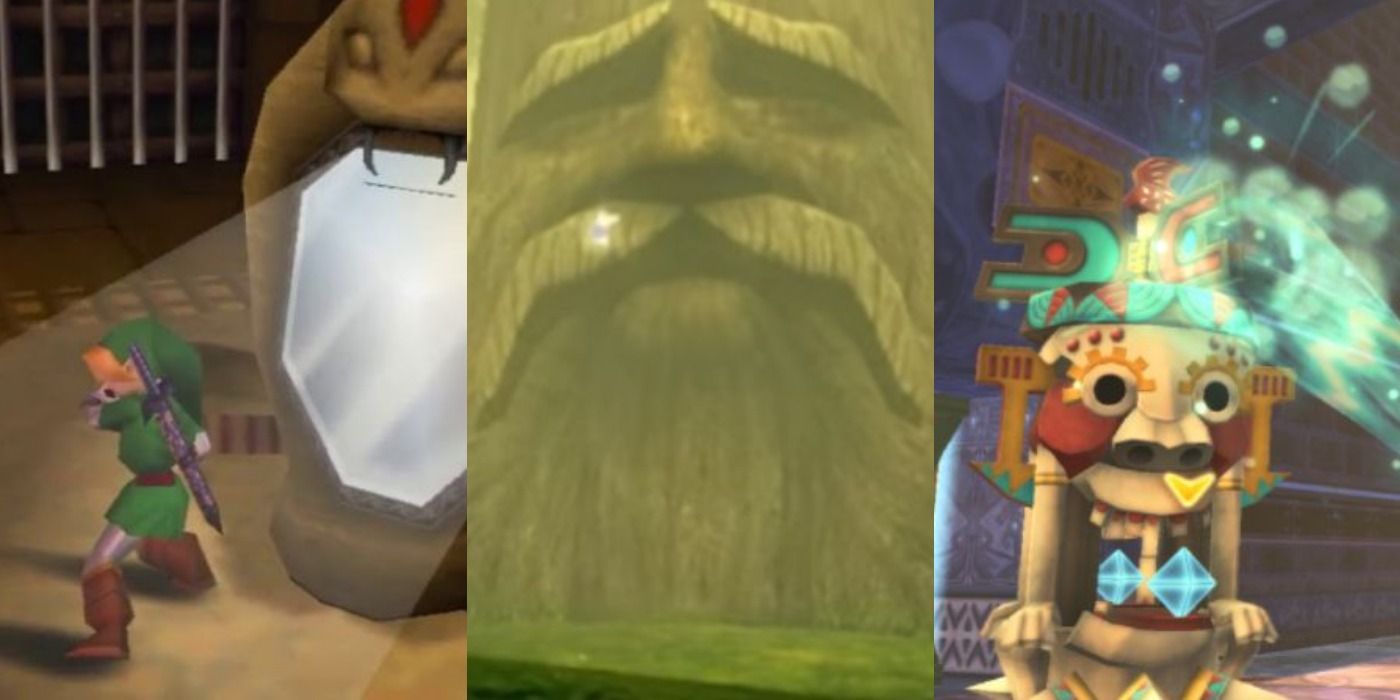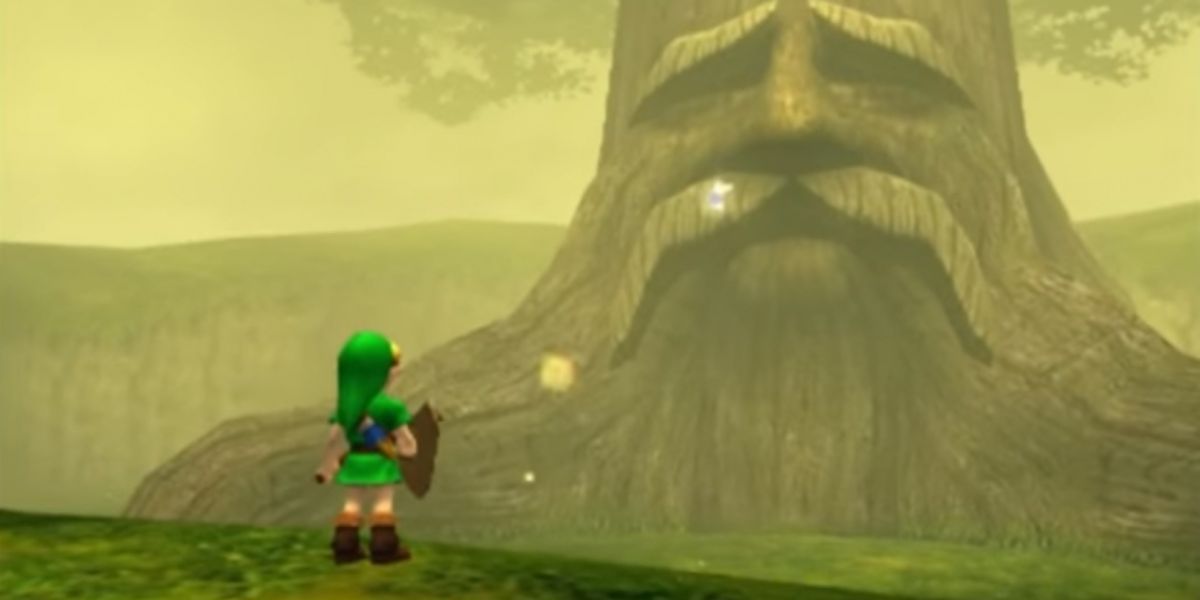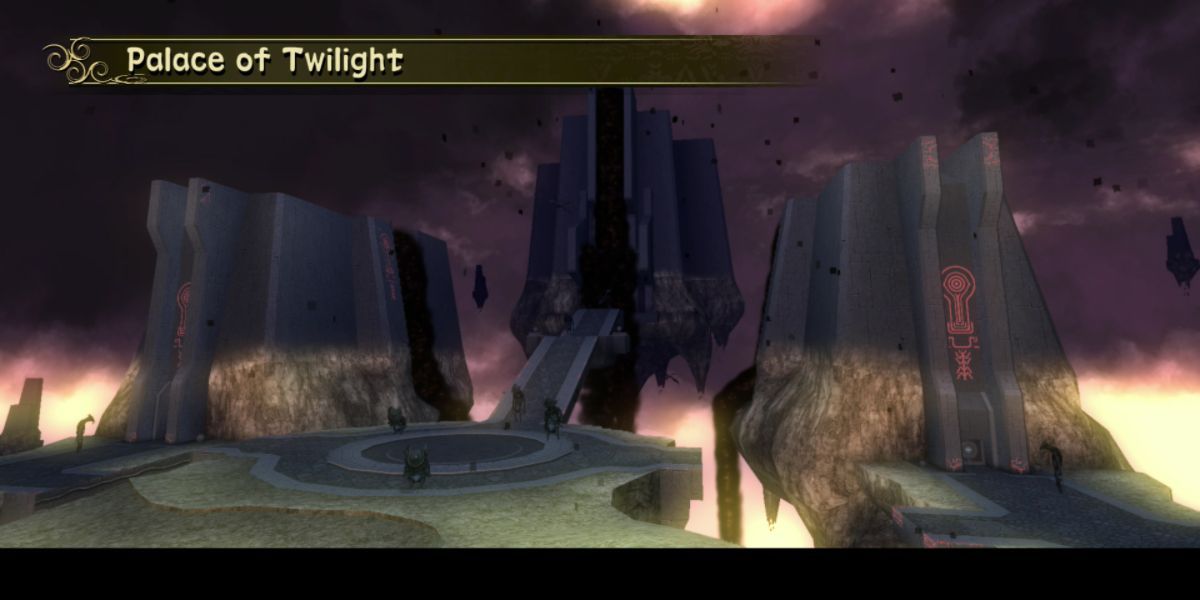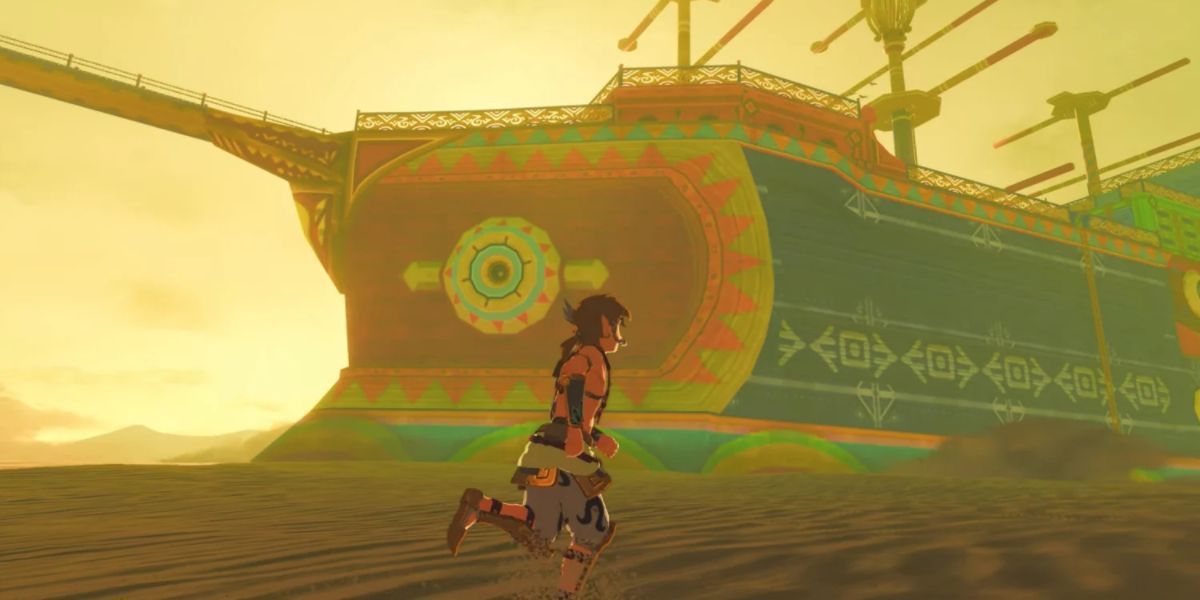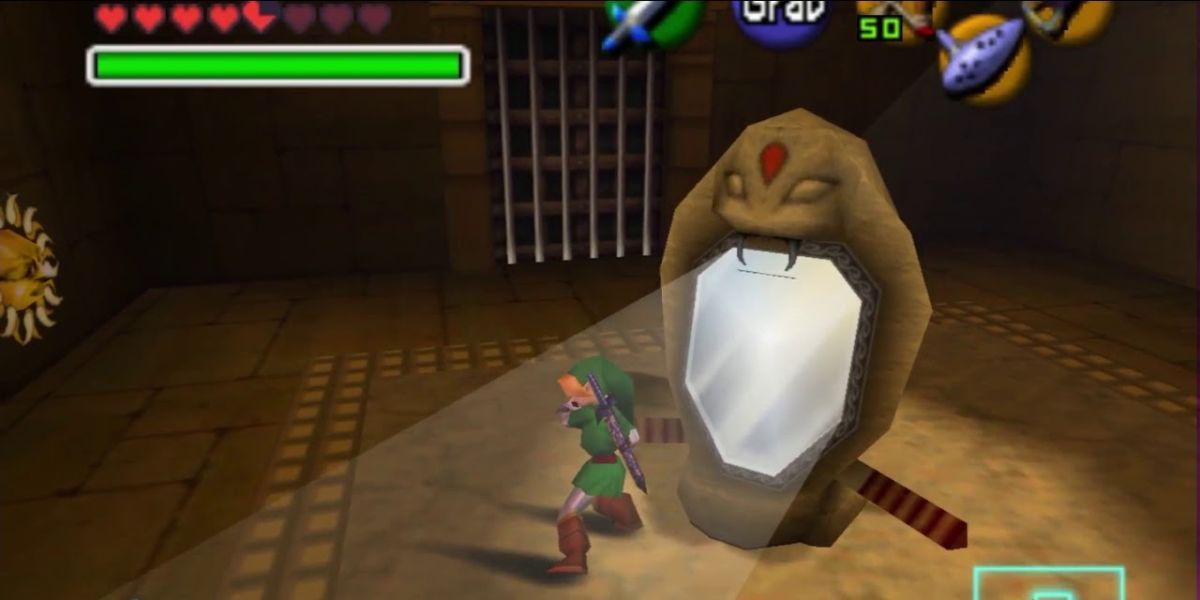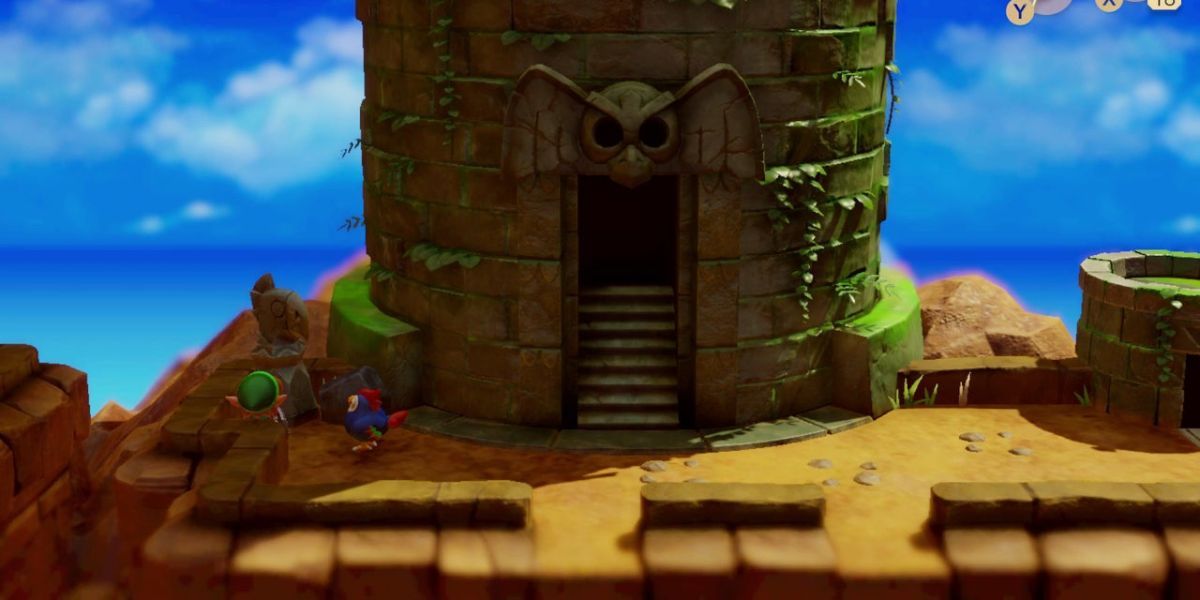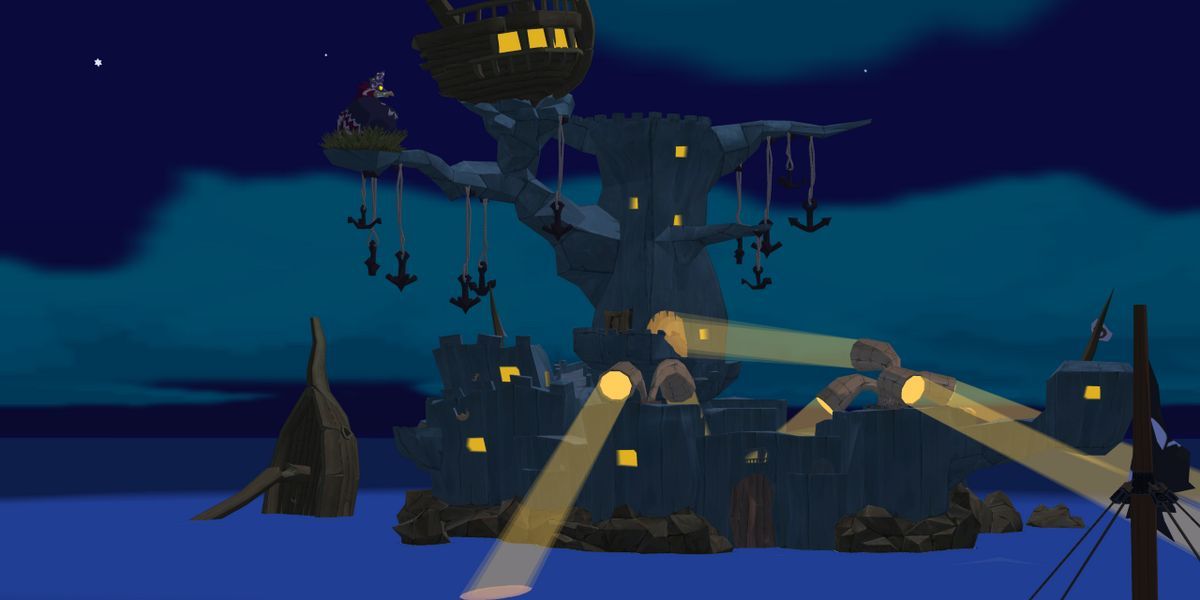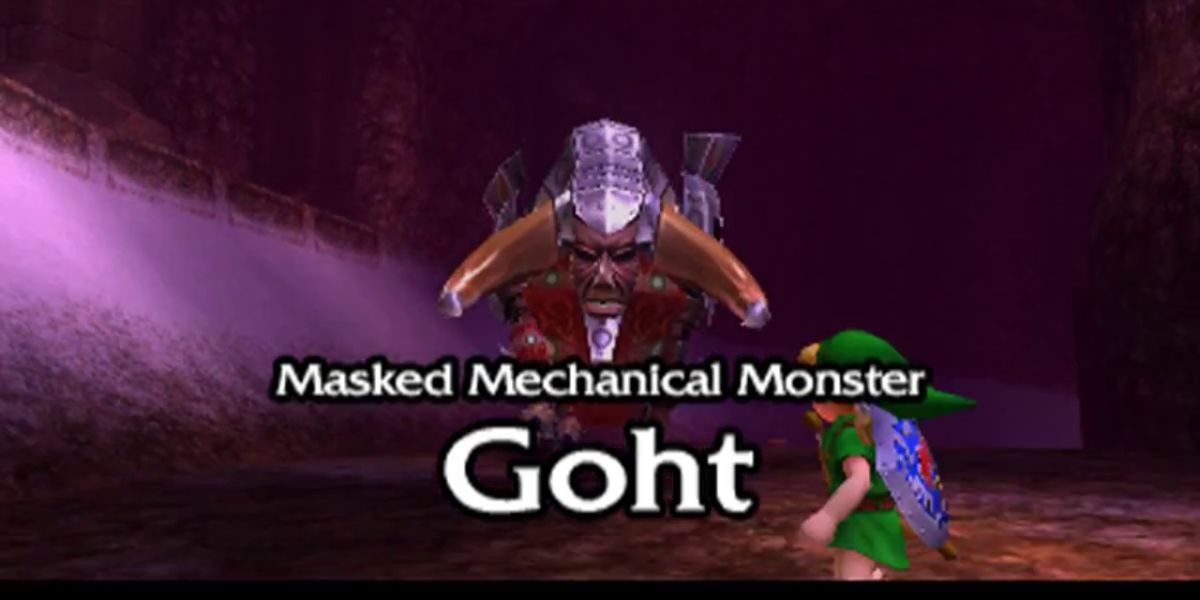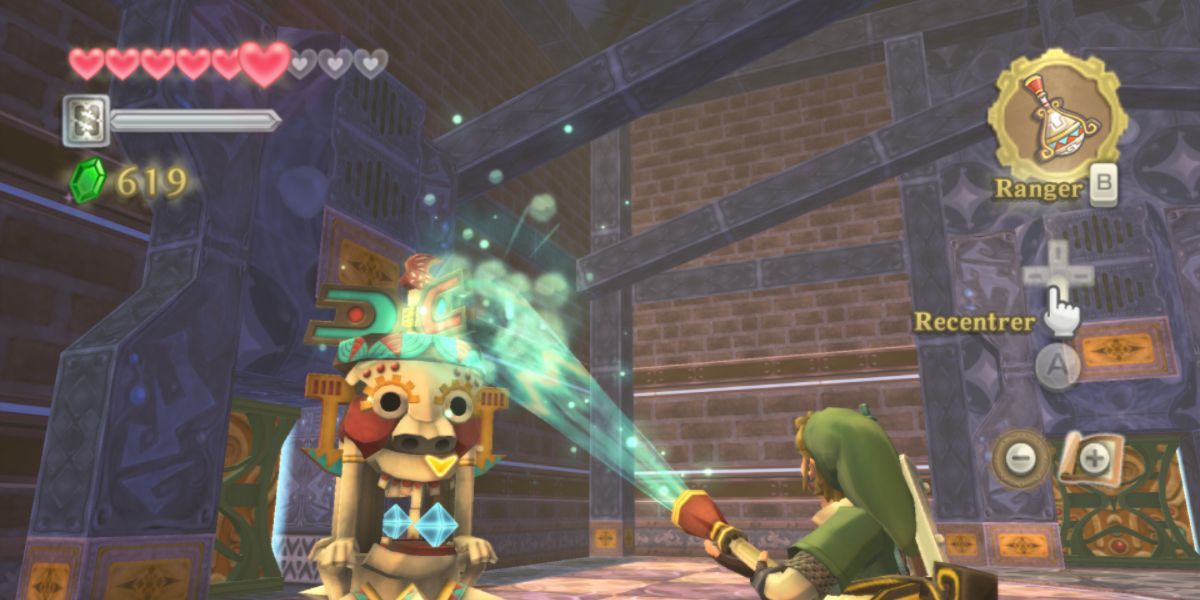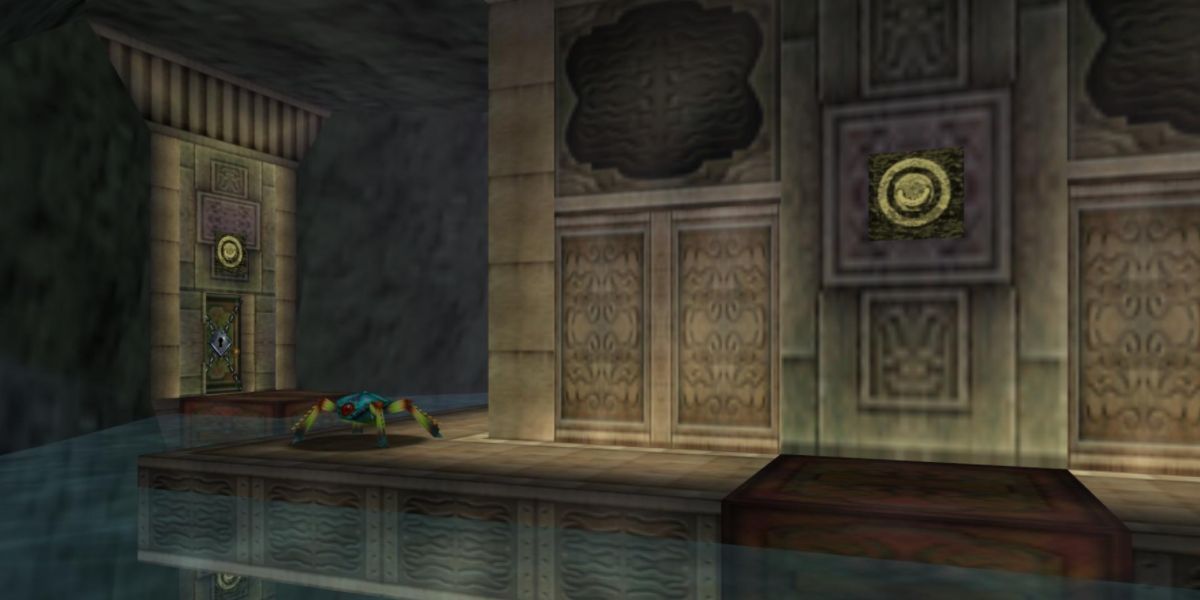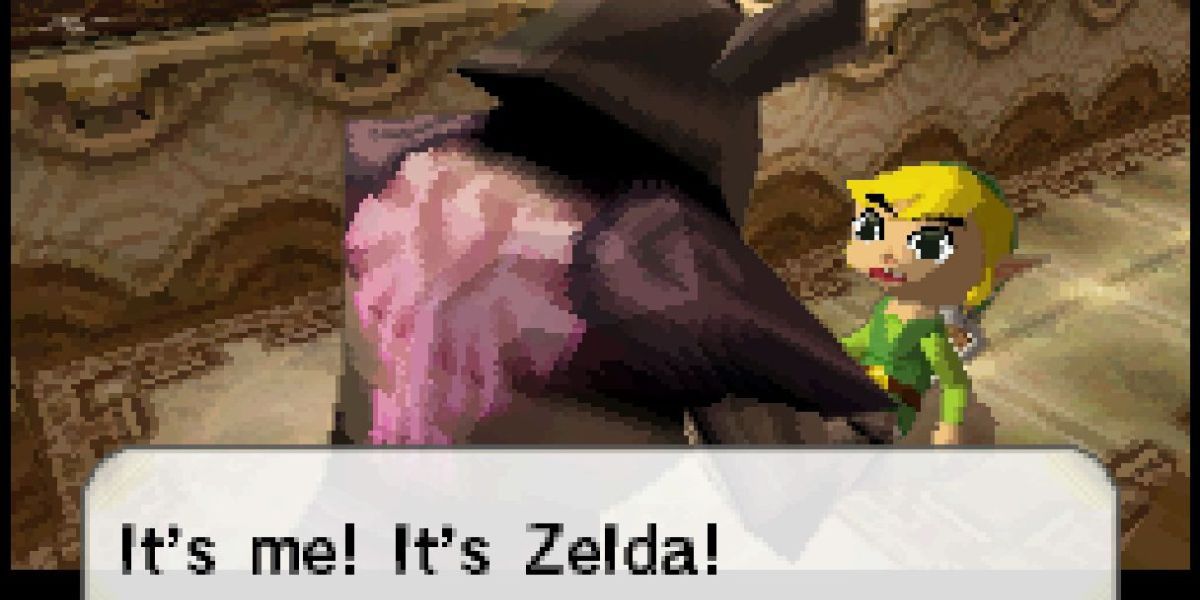The Legend of Zelda franchise features levels that have defined the gaming industry for decades. Despite this, not every dungeon in the series gets the credit it deserves. With dozens of levels across nearly twenty titles, it’s understandable that some might fall off the radar or be written off altogether.
Some of these less-than-popular dungeons, however, are gems of design, replete with unique gameplay mechanics and dynamic relationships to their parent game’s story. They may not be the most representative of the franchise as a whole, but these dungeons rank among the best in the Legend of Zelda series. Be sure to give them a closer look.
The Great Deku Tree (Ocarina of Time)
The Legend of Zelda: Ocarina of Time defined a generation of console games and holds a special place in the hearts of many fans as the first 3D entry into the franchise. With so many amazing levels, the first dungeon players encounter in the game -- the Great Deku Tree -- is often overlooked for the triumph of game design it represents.
Taking place within a colossal mustachioed tree, this level is a finely crafted introduction to the game's platforming and puzzle-solving dynamics. It is accessible enough that newcomers can still learn the ropes while presenting enough of a challenge to keep players of multiple generations actively engaged. One particularly memorable dynamic requires Link to leap from a great height to break through a spiderweb barrier within the floor. It's an exhilarating leap of faith that, among other reasons, places the Great Deku Tree among the franchise's most underrated dungeons.
The Palace of Twilight (Twilight Princess)
The only dungeon from Twilight Princess to make this list, the Palace of Twilight represents one of the Legend of Zelda series' most unusual and memorable dungeons. It features the unique mechanic of Dark Fog, which forces Link into his Wolf form when he comes into contact with it. These segments of the dungeon can then be reapproached differently once the Master Sword has become imbued with light and can dispel the fog.
This dungeon's boss, the game's central antagonist Zant, also features a stunning six-stage fight that transports players to prior dungeons for a climactic showdown. Though it's not often included among fan-favorite levels, the Palace of Twilight is a masterpiece among Zelda dungeons.
Sandship (Skyward Sword)
The Sandship Dungeon in Skyward Sword is a colossal pirate ship that uses Timeshift technology to sail through the Lanayru Sand Sea. Though this dungeon is hardly synonymous with the Legend of Zelda franchise, it features a stunning "mobile dungeon" design that Nintendo would take to epic extents in 2017's Breath of the Wild.
The boss battle against Abyssal Leviathan Tentalus brings memorable gameplay to Skyward Sword that satisfyingly recalls the old-school fights of other Nintendo titles, such as Luigi's Mansion. This level even features a swashbuckling mini-game that makes use of the game's original intended controller, the Wiimote. Though it is rarely featured among fan-favorite dungeons, the Sandship isn't to be overlooked as a meaningful and underrated dungeon in the Legend of Zelda franchise.
Spirit Temple (Ocarina of Time)
Located at the extremities of the Gerudo Desert, the Spirit Temple is the last chronological temple players will tackle before the game's final act. As a result, it is often overlooked between the fan-favorite Shadow Temple and Ganon's Castle. The Spirit Temple, however, features some of the most challenging puzzles and strongest enemies in the game.
It also has admirable narrative depth, sporting a mini-boss fight against Link's ally Nabooru in disguise. Most notable is this temple's use of Ocarina of Time's time-traveling mechanic, which requires players to return as both adult and child Link to solve its many puzzles. There's so much going on in this underappreciated dungeon, that it is rumored to have been an early draft of Ocarina of Time's final level.
Eagle's Tower (Link's Awakening)
This classic Legend of Zelda game was remade in 2019 featuring an all-new 3D design. Of its dungeons, the Eagle Tower features a unique concept that requires players to physically alter the level's landscape to progress.
By tossing an iron ball, Link can collapse support pillars between the second and third floors. This causes part of the tower to cave in, which allows access to higher floors and the boss arena. The mini-boss, Grim Creeper, also reappears riding the tower's boss, Evil Eagle -- a notable rarity for the franchise. It's also worthwhile to note that this ingenious design was first implemented in the classic 1993 title, making this dungeon well ahead of its time.
Forsaken Fortress (Wind Waker)
Wind Waker's Forsaken Fortress places Link within an abandoned pirate stronghold taken over by Ganondorf. Though players arrive at this fort as a prisoner early in the game, the dungeon is not truly tackled until Link returns at the story's midpoint after Tetra is kidnapped. The searchlights add a rare optional stealth mechanic to the dungeon's gameplay, giving Link the option of hacking through moblins or circumventing them entirely.
The cutscene following the defeat of Helmaroc also represents one of the most cinematic moments in Wind Waker -- an unforgettable moment when Link confronts Ganondorf for the first time.
Snowhead Temple (Majora's Mask)
Majora's Mask is undoubtedly one of the strangest games in the Legend of Zelda series. Despite this, it includes three fan-favorite dungeons and a fourth that is not as popular -- Snowhead Temple, situated atop the mountain range above the Goron Village. This dungeon is structured as a tower to be climbed and features numerous challenging mechanics like frictionless icy floors and chests or buttons that are frozen in ice and must be melted.
Perhaps the most ingenious mechanic of this temple is its rally jumps. By utilizing the rolling ability of Link's Goron form, players can accelerate to top speed and use icy banks to leap chasms and reach previously inaccessible areas. Snowhead Temple also features one of the series' most unusual bosses -- the bull-like Goht, who races the player around a snowy track. Defeat this interestingly designed boss to alleviate the unseasonable blizzard plaguing the Gorons and progress further with the central narrative of Majora's Mask.
Lanayru Mining Facility (Skyward Sword)
The Lanayru Mining Facility is not only unique as a dungeon in Skyward Sword, but it also features elements unseen in any other Legend of Zelda game. These mechanics include the use of the Gust Bellows -- essentially an enchanted vacuum cleaner -- and the region's myriad Timeshift Stones. By sucking up sand or blowing wind-powered turbines, Link can activate switches, clear causeways, and even disorient enemies.
The Timeshift Stones allow for everything within a fixed radius to travel back in time and is mostly used to cleverly revitalize the mining facility's defunct machinery. When combined, these two elements make for a challenging and memorable experience, easily ranking the Lanayru facility as one of the franchise's most underrated dungeons.
Water Temple (Ocarina of Time)
There's no question about it: Ocarina of Time's Water Temple is one of the hardest dungeons in the Legend of Zelda franchise. Much of this difficulty arises from the environment -- a sunken Zora labyrinth that demands the use of all the skills that brought the player there. Its many puzzles require players to switch between regular and Iron Boots as a substitute for swimming, allowing Link to alternatively sink and float to reach different areas.
This dungeon is also notable for the inclusion of Link's shadowy doppelganger Dark Link, a franchise favorite mini-boss. Despite its reputation for difficulty, the Water Temple is an example of a stellar design that often goes unappreciated.
Tower of Spirits (Spirit Tracks)
2009's Spirit Tracks is often unfairly dismissed as a game due to several questionable aesthetic choices, including the presence of a magical cannon-firing locomotive. Despite its quirks, the game represents a worthy successor to Wind Waker and features a particularly underrated dungeon in the Tower of Spirits. This dungeon is most notable for its co-op mechanics with Princess Zelda that rise well above comparable "partner dungeons" across the franchise.
It also has a rare and compelling iterative design that requires players to return several times to ascend higher. In this way, the Tower of Spirits becomes a dynamic minigame between other boss dungeons -- an inventive design that makes it one of the better levels in the Legend of Zelda franchise's most underappreciated title.

